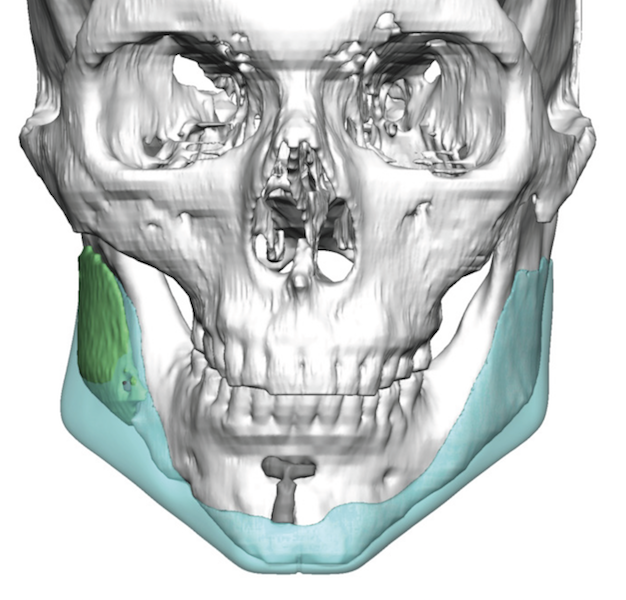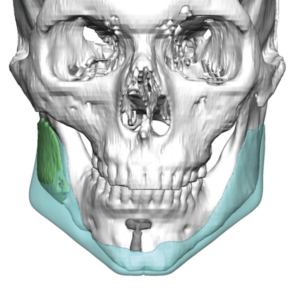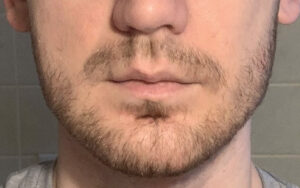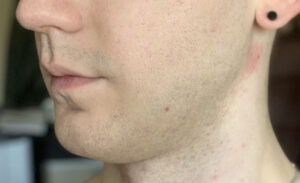Background: Lower jaw asymmetries are not uncommon and affect each side equally. They are often part of a more complete facial asymmetry that continues up the face to the forehead. In this type of facial asymmetry the lower jaw is the most visible part of the deformity and is the focus of any corrective efforts. Provided the occlusion is satisfactory (good interdigitation and level) or has been previously corrected, the focus is on building out the deficient jawline.
The traditional approach to aesthetic lower jaw asymmetries is a combination of a bony chin shift back to the midline using the sliding genioplasty concept and the placement of a jaw angle implant. This seems like a good approach but, when one realizes this only changes the front and back end of the jaw in an eyeball estimation, it becomes evident why it produces inadequate or disappointing results.
A more comprehensive approach is to first get a 3D CT scan to assess the full extent of the deformity in a measurable way. When doing is it will become evident that the jawline deficiency is complete from front to back. It is the entire jawline that needs built out for which a custom jawline implant is the optimal way to do so.

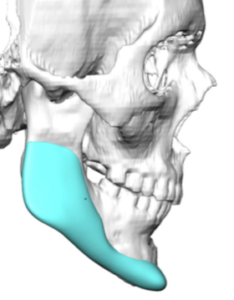

Under general anesthesia and through his submental scar and intraoral incisions the right jaw angle implant was removed and the custom jawline implant placed. He developed a postoperative infection due to breakdown of his right posterior vestibular incision which resulted in the temporary removal of the jawline implant. But three months later using pedicle buccal fat pad flaps underneath the intraoral incisions, the jawline implant was replaced and went on to successfully heal without an infection.
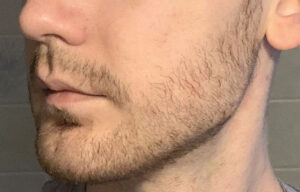
In lower jaw asymmetry it is important to appreciate that it is the entire jawline that is deficient. Ten or twenty years ago working on the just the chin and jaw angle with traditional techniques and intraoperatively deciding what looks good was an acceptable approach. But with 3D CT scanning technology and custom implant designing methods a more complete and improved result can be obtained. While just the unilateral jaw asymmetry can be treated I find that many men choose to go for a complete jawline augmentation effect as well.
Case Highlights:
1) Traditional piecemeal approaches to the correction of jaw asymmetry often result in an inadequate result.
2) A 3D CT scan, regardless of the treatment ultimately chosen, is an important preoperative assessment in bony facial asymmetry.
3) A custom jawline implant is always the superior approach to the treatment of a jaw asymmetry.
Dr. Barry Eppley
Indianapolis, Indiana

